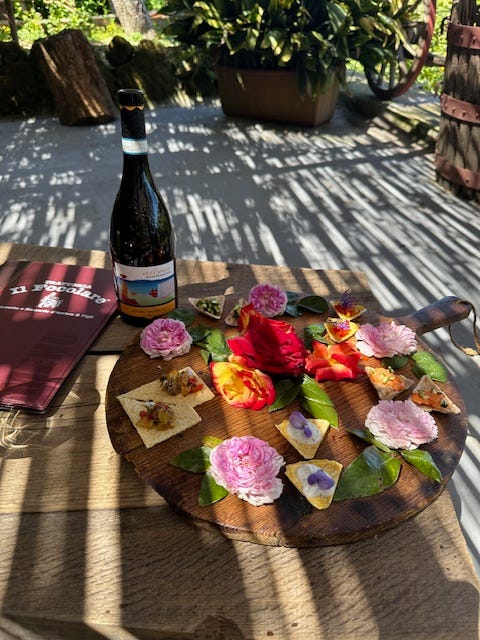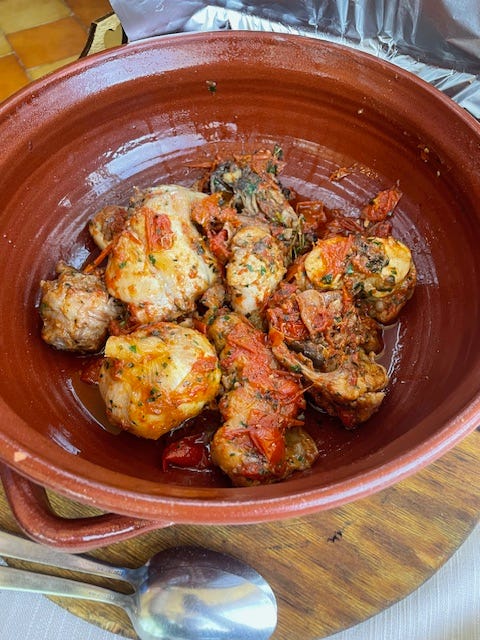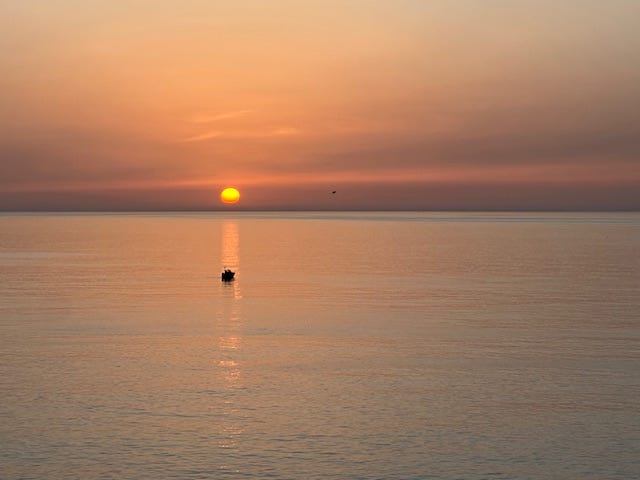An Island’s Healing Waters
Ischia, a large volcanic island in the Bay of Naples, is an hour's ferry ride from the city. Its waters bubble under the surface and escape through vents, creating thermal baths that have attracted people to its healing waters for millennia. The wild natural conditions on the island have inspired awe and fear, generating stories that helped people make sense of their relationship to nature and its volatility.
According to Ischia's founding myth, a giant monster named Tifeo (or Typheus) was angry with Zeus for the imprisonment of the Titans* and sought to destroy the father of the ruler of gods and humans. Tifeo, with flames gushing from his mouth and a hundred dragon heads under his arms, battled Zeus and was nearly victorious. He disarmed Zeus' most potent weapon, his thunderbolts, by cutting through the sinews of his feet and hands. But Hermes, Zeus' son, restored the ligaments, and Zeus eventually overcame Tifeo. As punishment, Zeus condemns the giant to imprisonment under the island of Ischia. Tifeo continues to vent his anger with earthquakes, flames, and boiling water. Various towns on the island today are named after Tifeo's body parts. For example, there is "Ciglio," which means eyelid, and "Panza," which means stomach.
Ischia's healing waters first attracted Greeks wounded in battle in the 8th century BC, followed by the Romans who built the first public spas. Abandoned in the Middle Ages, the Renaissance was the beginning of a renewed interest in them. But then, only wealthy Neapolitans and aristocrats had access to them. In the mid-20th century, Ischia became an international destination because it developed public thermal parks, hotels with wellness centers, and beauty and medical clinics offering mud treatments.
People seek the island's water to alleviate conditions like osteoporosis, arthritis, sciatica, respiratory illnesses, allergies, and skin conditions. Marie Curie and other scientists came to Ischia in 1918 to study the thermal springs. The most essential therapeutic element is radon dissolved in the water, though the radioactivity is so low that it is not harmful. Slowly, research on the waters has appeared in international medical journals, and remedies of ancient civilizations are now prescribed for modern society.
Eileen and I stayed in Forio, the largest port town on the island, located near the two popular public thermal parks, Giardini Poseidon and Negombo. Nearby, in the hamlet of Panza, in the Bay of Sorgeto, the hot springs bubble up directly under the sea floor. You can soak in a mix of hot spring and cool sea water, making a natural hot tub.
When we arrived, I asked Alessandra, who showed us the apartment, where we might visit the natural hot springs. She warned us to be cautious as we entered the water that wasn't part of water parks or wellness hotels. "Sometimes the water is so hot people use it to boil pasta or potatoes!"
We spent a day at Negombo hydrothermal spa park, with over a dozen thermal pools of varying temperatures, lush grounds, and a beautiful beach. Its unassuming entrance masked the extraordinary gardens that await. The 22-acre park in San Montano Bay, tucked into a mountainside, has extraordinary views of the Tyrrhenian Sea. Here, we sat under cascading waterfalls that massaged us with 86-degree water. We soaked in a grotto's adjacent hot and cold pools surrounded by lush vegetation. We floated in meditation in a large pool, looking up at the sky with our breathing as the only sound.
Ischia has more to offer than the waters. Its low mountains have many walking paths along beautiful green vegetation, including holm oak trees and bushes typical to Mediterranean climates. In these hills, Eileen and I visited Il Fornello, a restaurant high up in the hills run by the d'Ambra family. On an island not known for its food, we indulged in a memorable three hour lunch beginning with appetizers and local wine served in the gardens, featuring rabbit prepared traditionally and served in clay pots.


We ended our time on the island renting a boat to enjoy a view of the island from the water. After Ischia, Eileen and I traveled to Lido di Ostia, a seaside town on Rome's outskirts, to have a quiet day near the airport where we could share our experience of this time together. There is always a pang of sadness when saying goodbye to a friend after a special time of connection. The memories will always remain.
I'll take a two week break from writing to absorb the experience of Sicily, a place I've wanted to visit for years. I've imagined it as a place where I'll rent a home for a more extended period and invite loved ones to visit. Oddly, I first visited most of the other regions of Italy. Will the desire to spend more time in Sicily become a reality after this visit?
The 3 Cs of Belonging will return May 29th. Fino ad allora, prendetevi cura l’uno dell’altro e godetevi la bellezza della vita! Arrivederci!







